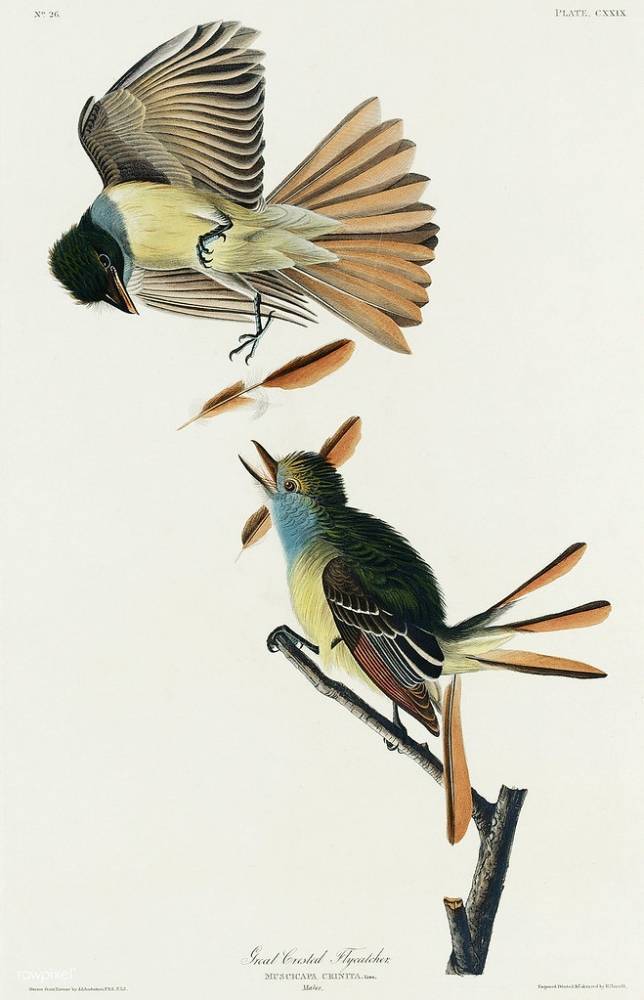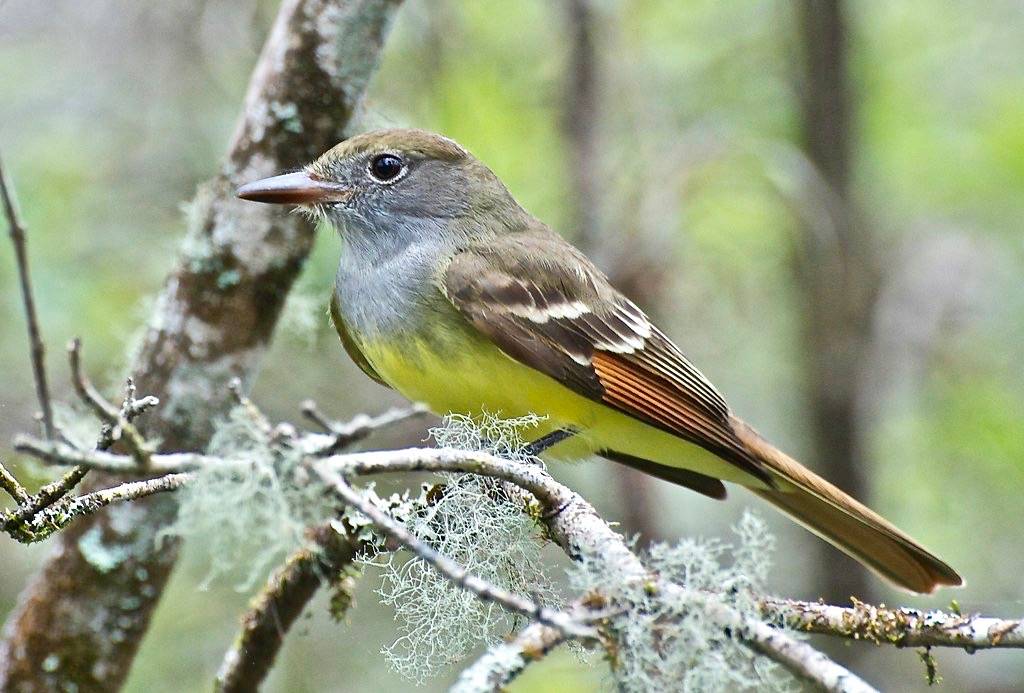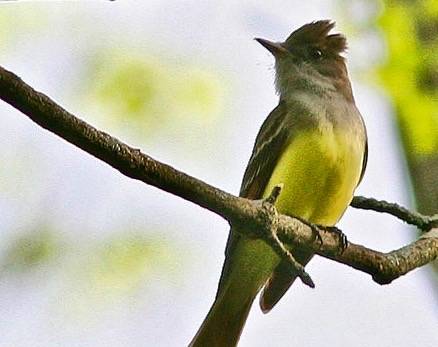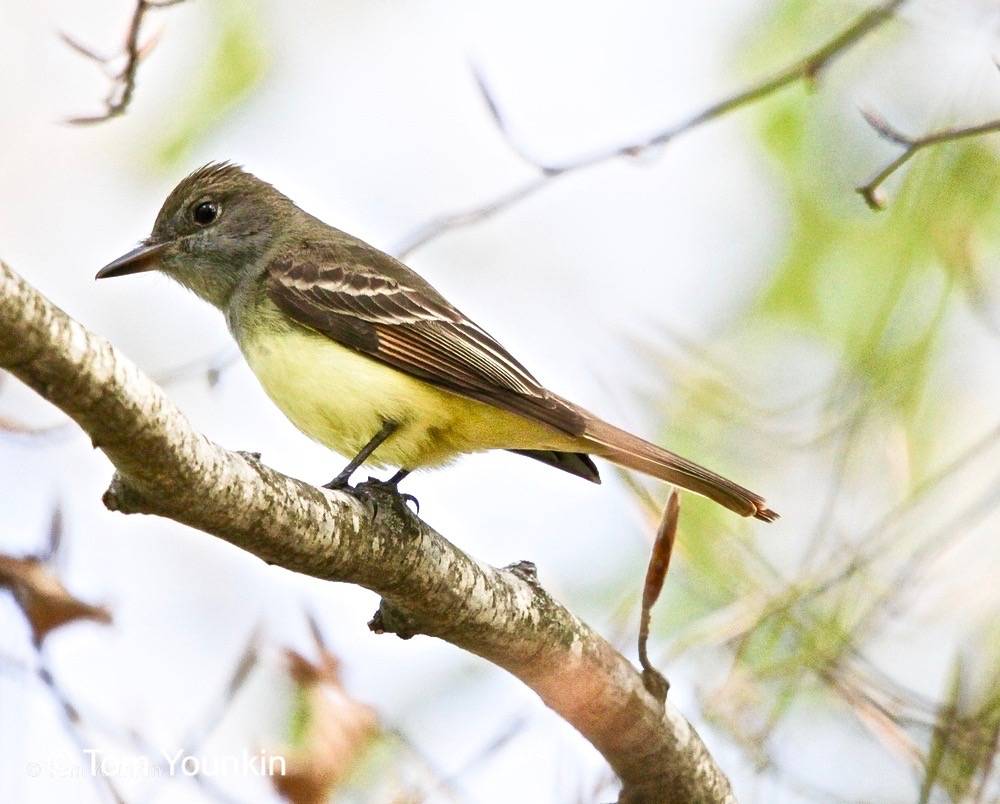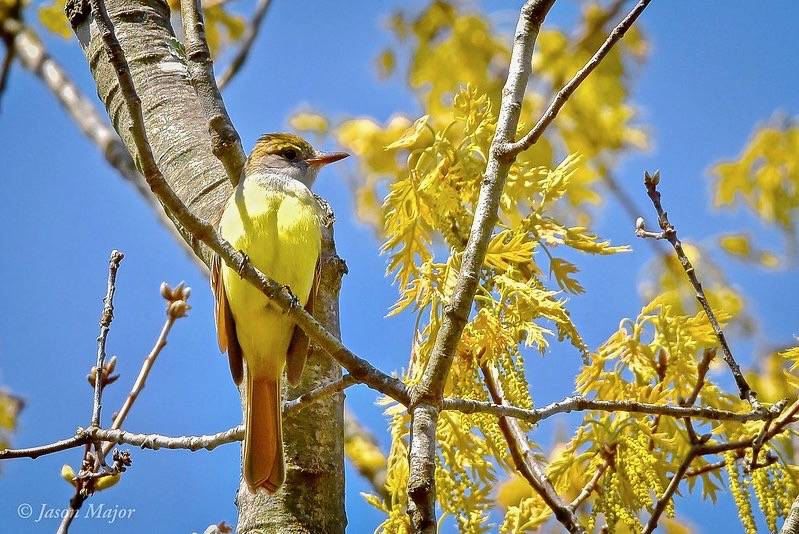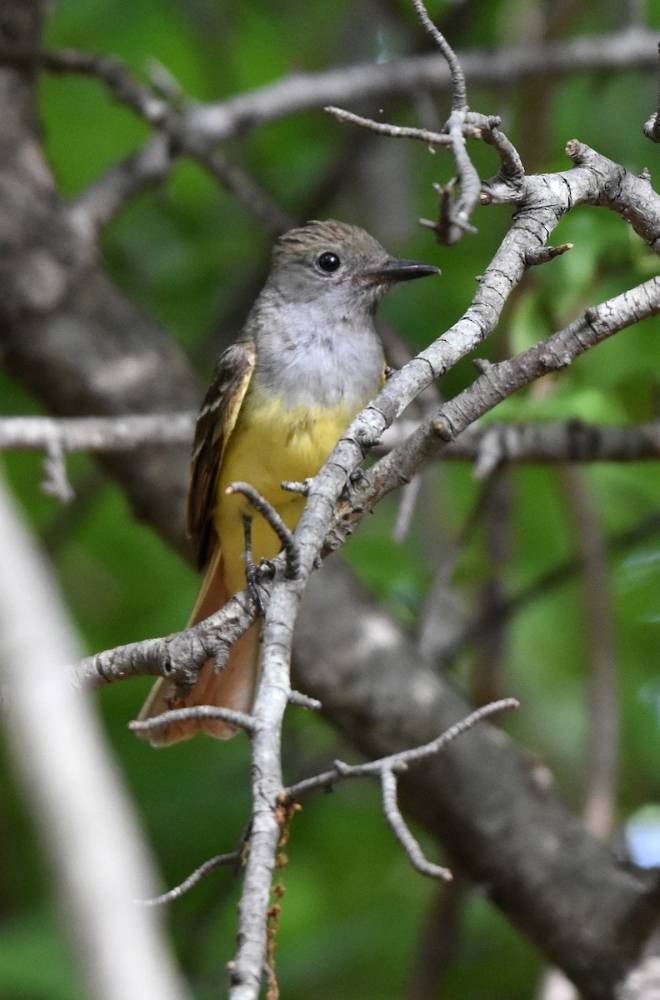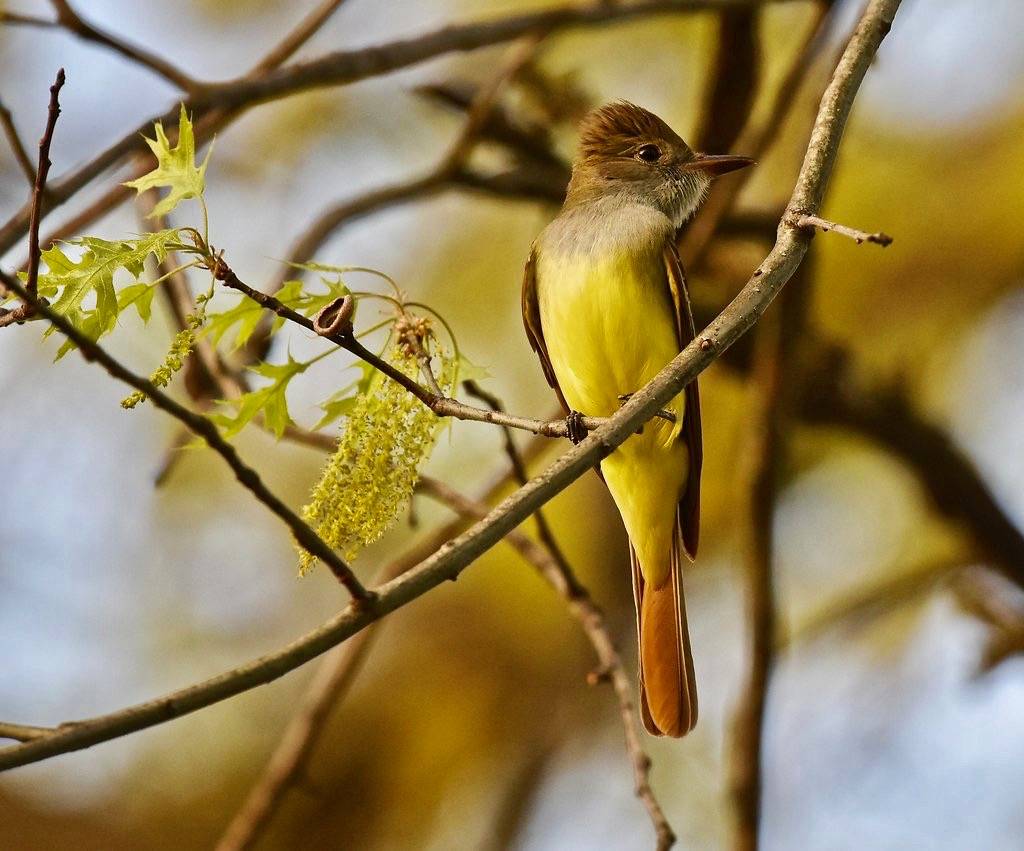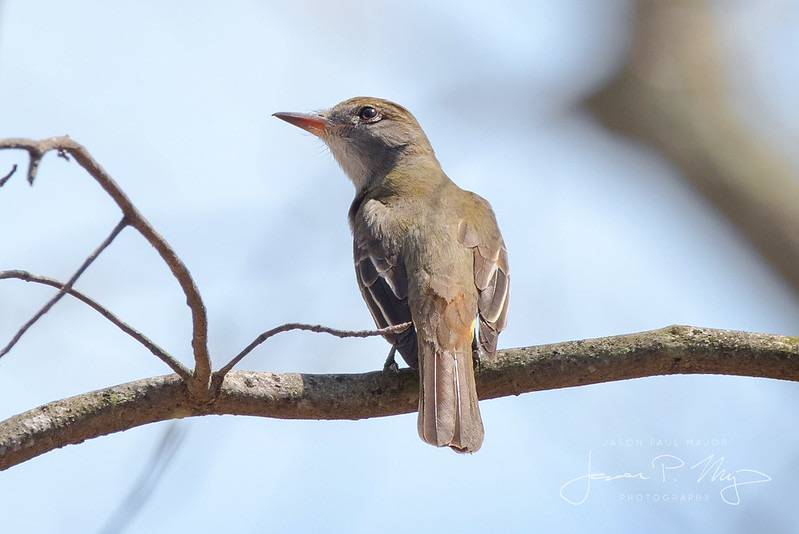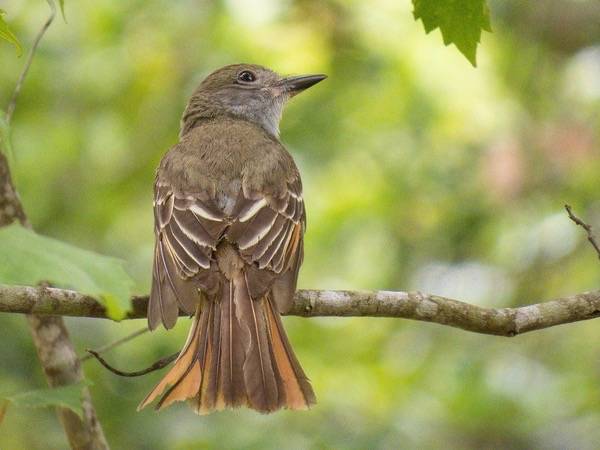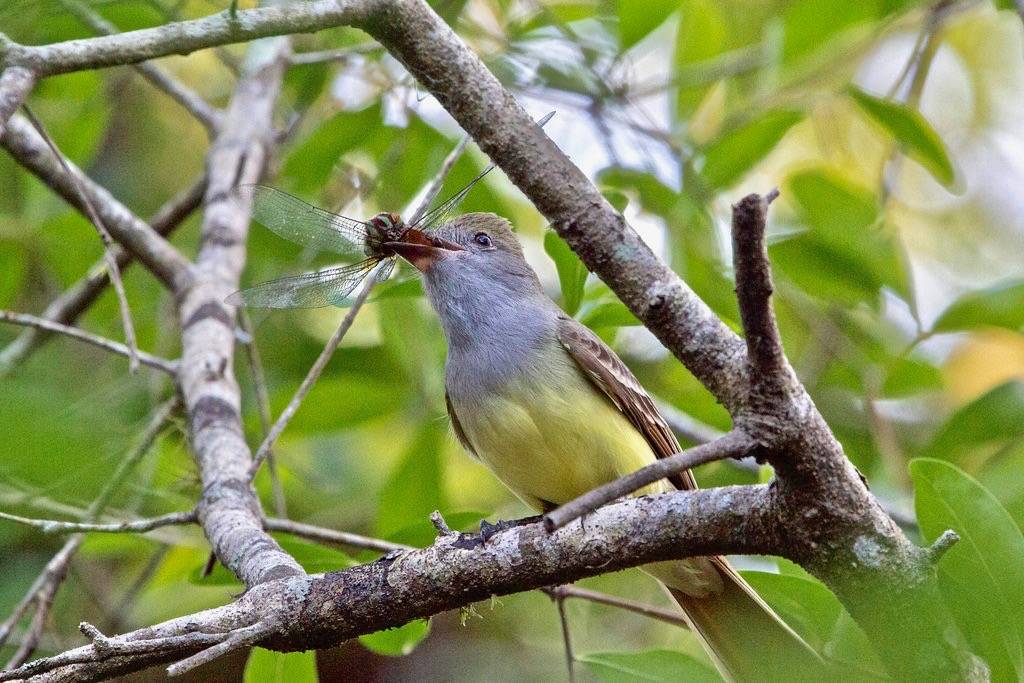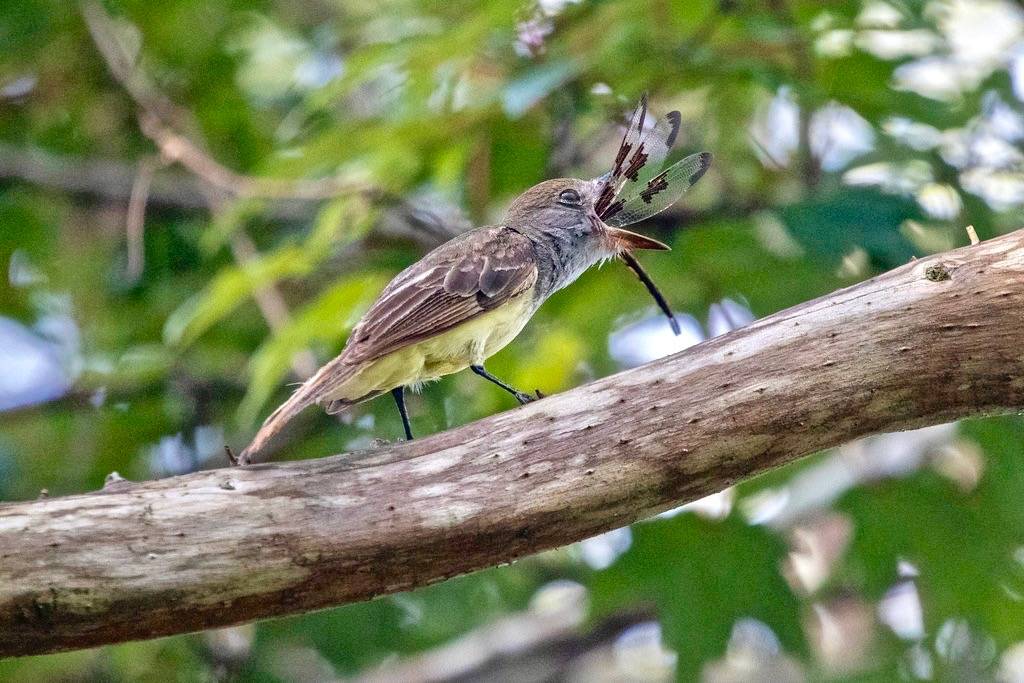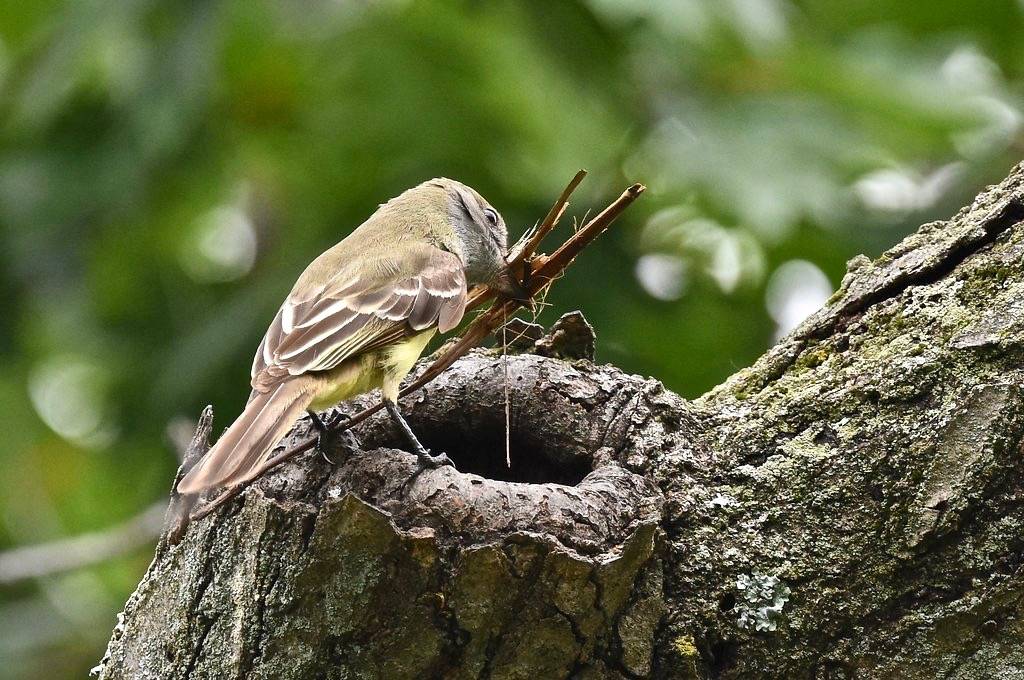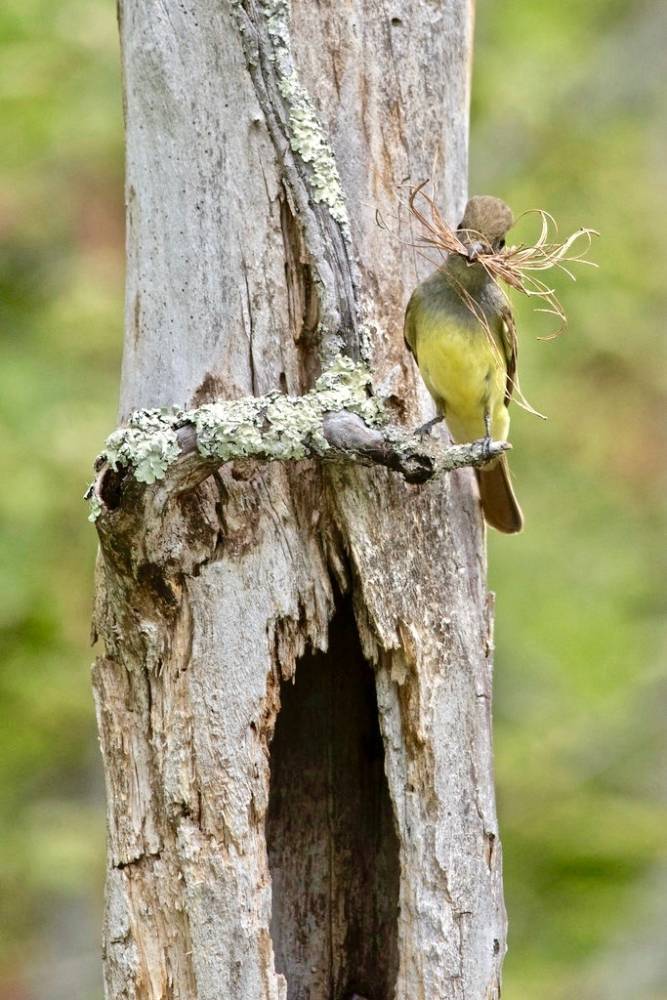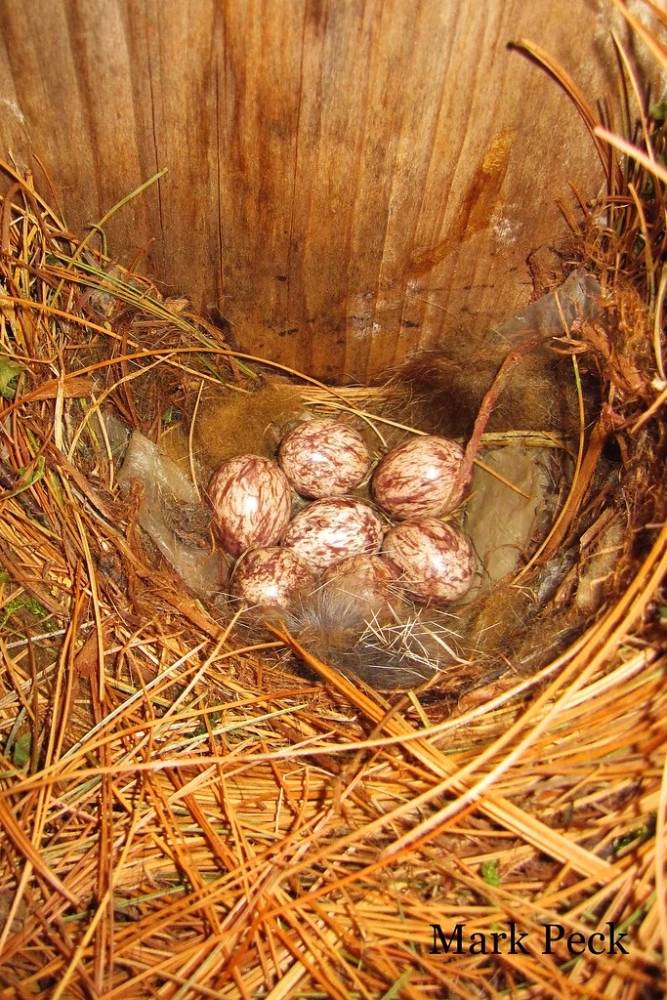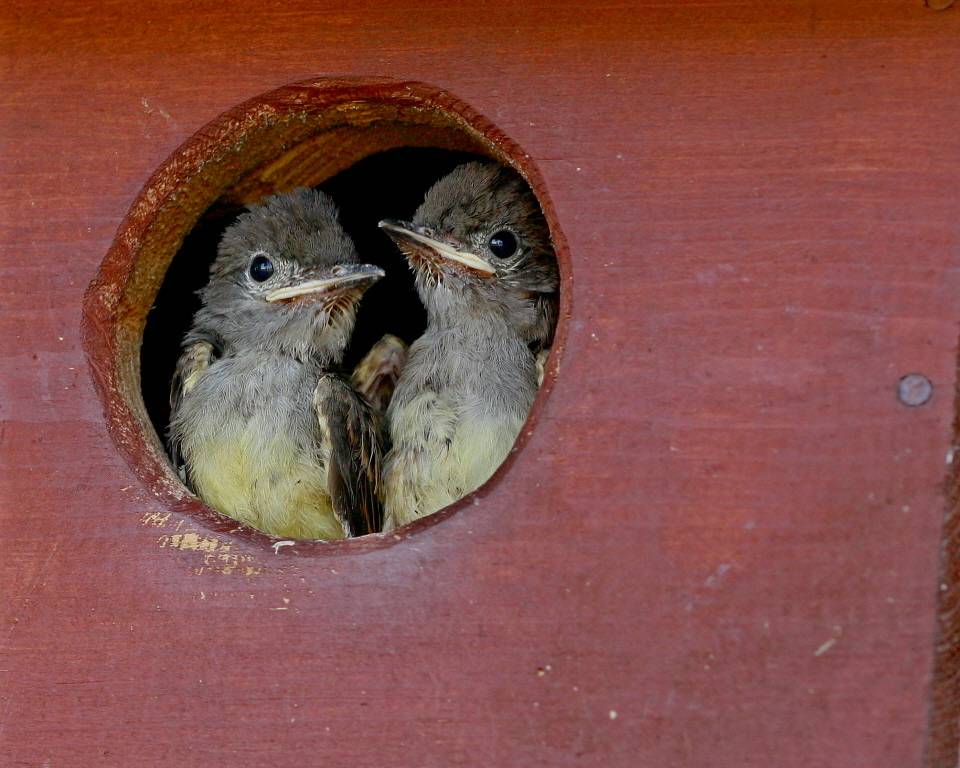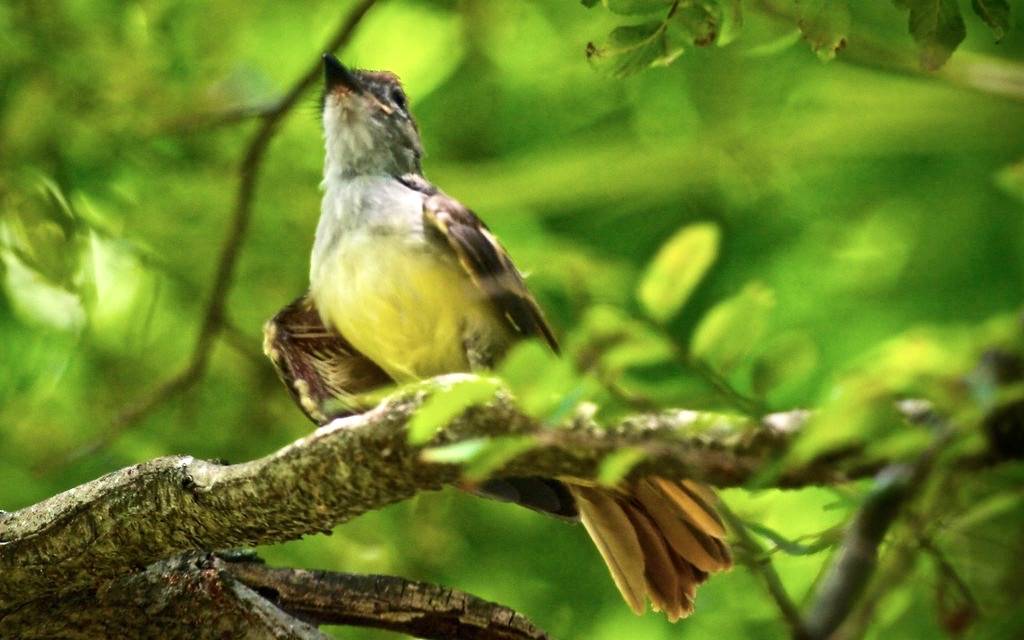Great Crested Flycatcher
Five of the six flycatcher species recorded at Salter Grove are only seen during migration, none staying for more than a few days. Only the Great Crested Flycatcher has been observed throughout the breeding season, from May to August. As recently as 2021, it was heard in the woods along the Upland, and Pond Trails, and seen catching flying insects from a perch along the Marsh Trail.
Despite being one of the larger, and more brightly colored flycatchers, it is not an easy bird to spot because it prefers to stay within dense canopy foliage. It does become more visible when it is perched on the edge of woodland, flashing the rust-colored feathers in its wing and tail as it sallies forth to catch flying insects.
The insectivorous Great Crested Flycatcher breeds across eastern North America in deciduous and mixed forests with a discontinuous canopy. It avoids closed-canopy forests and will even nest in pastures or golf courses if there are enough trees around. Individuals breeding in Southern Canada and northeastern United States winter in Mexico and coastal Central America while those breeding in the southern states are year-round residents. Fruits are added to its diet after the breeding season
The upland woods at Salter Grove ought to be a suitable nesting habitat but the Great Crested has not been observed since 2021. It is possible that the canopy at the park is now too open due to recent wind damage to tree crowns.
Salter Grove must be a challenging location for flycatchers in general. A study of the Barn Swallow, another species that feeds on flying insects, indicated that when wind speed increases, the availability of flying insects goes down. So, the same diurnal breezes off the Providence River that are so pleasing to visitors cause the park to be a food desert to birds that feed on flying insects!
For more information:
https://www.allaboutbirds.org/guide/Great_Crested_Flycatcher
https://www.audubon.org/field-guide/bird/great-crested-flycatcher
https://en.wikipedia.org/wiki/Great_crested_flycatcher
http://www.biokids.umich.edu/critters/Myiarchus_crinitus/
https://esajournals.onlinelibrary.wiley.com/doi/10.1890/ES12-00310.1

